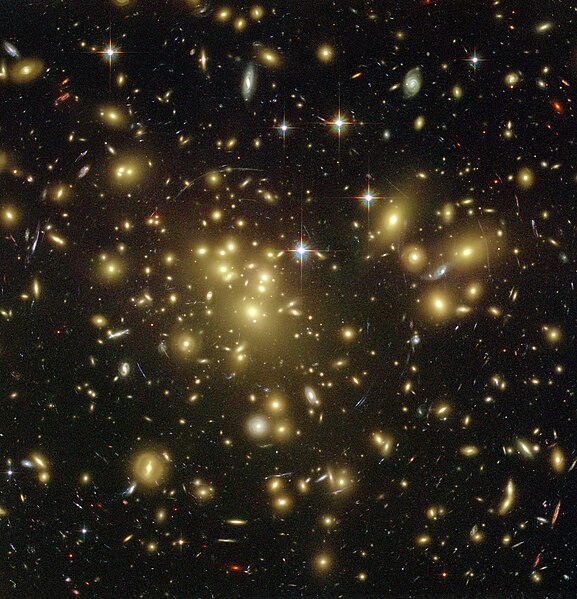

| Visitors Now: | |
| Total Visits: | |
| Total Stories: |

| Story Views | |
| Now: | |
| Last Hour: | |
| Last 24 Hours: | |
| Total: | |
One Step Closer To Dark Matter In Universe
The universe is still a mystery. We know what about 5 percent of the universe consists of. The rest is simply unknown. Researchers have gotten as far as knowing that a major portion, about 23 percent of the universe consists of a new kind of matter. No one has seen this matter, and no one knows what it consists of. The remaining roughly 72 percent of the universe is made up of something even more enigmatic, called dark energy. Jan Conrad and Maja Llena Garde are scientists at Fysikum, Stockholm University and the Oskar Klein Center for Cosmoparticle Physics, and they are part of the international research team that has taken a giant step toward finding dark matter with the help of a new method.

Credit: Wikipedia
“With our new method, for the first time we have been able to exclude models regarded by many as the most natural ones. Previous attempts did not achieve the same sensitivity. What’s more, our results are especially reliable,” says Jan Conrad.
“We can’t see dark matter because it doesn’t interact with the matter we know about. Nor does it emit any light. It’s virtually invisible. But we can determine that it affects the matter we’re familiar with.”

“We see how the rotation of galaxies is affect by something that weighs a lot but is invisible. We also see how the gas in galaxy clusters doesn’t move as it would if there were only visible matter present. So we know it’s there. The question is simply what it is. Many theoretical models have been developed to predict particles that meet the requirements for being identified as dark matter. But experiments are needed if we are to determine whether any of these models are correct,” says Jan Conrad.
Since dark matter is invisible, we can only see traces of it, and one way to do this is to look at light with extremely high energy, so-called gamma radiation. With the help of the satellite-borne Fermi Large Area Telescope, scientists can study gamma radiation and look for traces of dark matter.
“We’ve looked at gamma radiation from dwarf galaxies. These galaxies are small and dim, but extremely massive, so they seem to consist largely of dark matter. Unfortunately we still haven’t detected a gamma signal from the dark matter in these objects, but we are definitely getting closer. Our new method involves looking at several dwarf galaxies at the same time and combining the observations in a new way, which yields excellent results. This is an exciting time for dark matter research, because we’re getting closer and closer,” says Maja Llena Garde.
“This is truly a giant step forward in our pursuit of dark matter,” says the director of the Oskar Klein Center, Lars Bergström. “With my colleague Joakim Edsjö, I’ve studied these processes theoretically for more than ten years, but this is the first time important experimental breakthroughs are being seen. Now we just hope that Jan, Maja, and the Fermi team will continue this exciting quest using their new method.”
The research team’s findings are being published in the journal Physical Review Letters under the title “Constraining dark matter models from a combined analysis of Milky Way satellites with the Fermi Large Area Telescope.”
Contacts and sources:
Expertanswer (Expertsvar in Swedish)
Citation: The research team’s findings are being published in the journal Physical Review Letters under the title “Constraining dark matter models from a combined analysis of Milky Way satellites with the Fermi Large Area Telescope.”
Read more at Nano Patents and Innovations
Source:




really, you can’t see the electric footprint all over that?
come out of the dark, see the light, use the force..?!